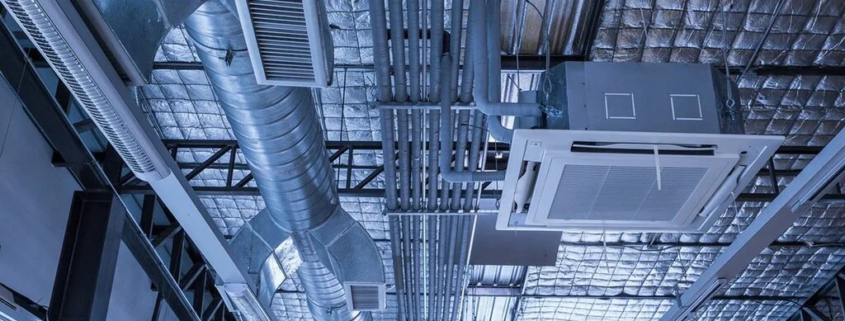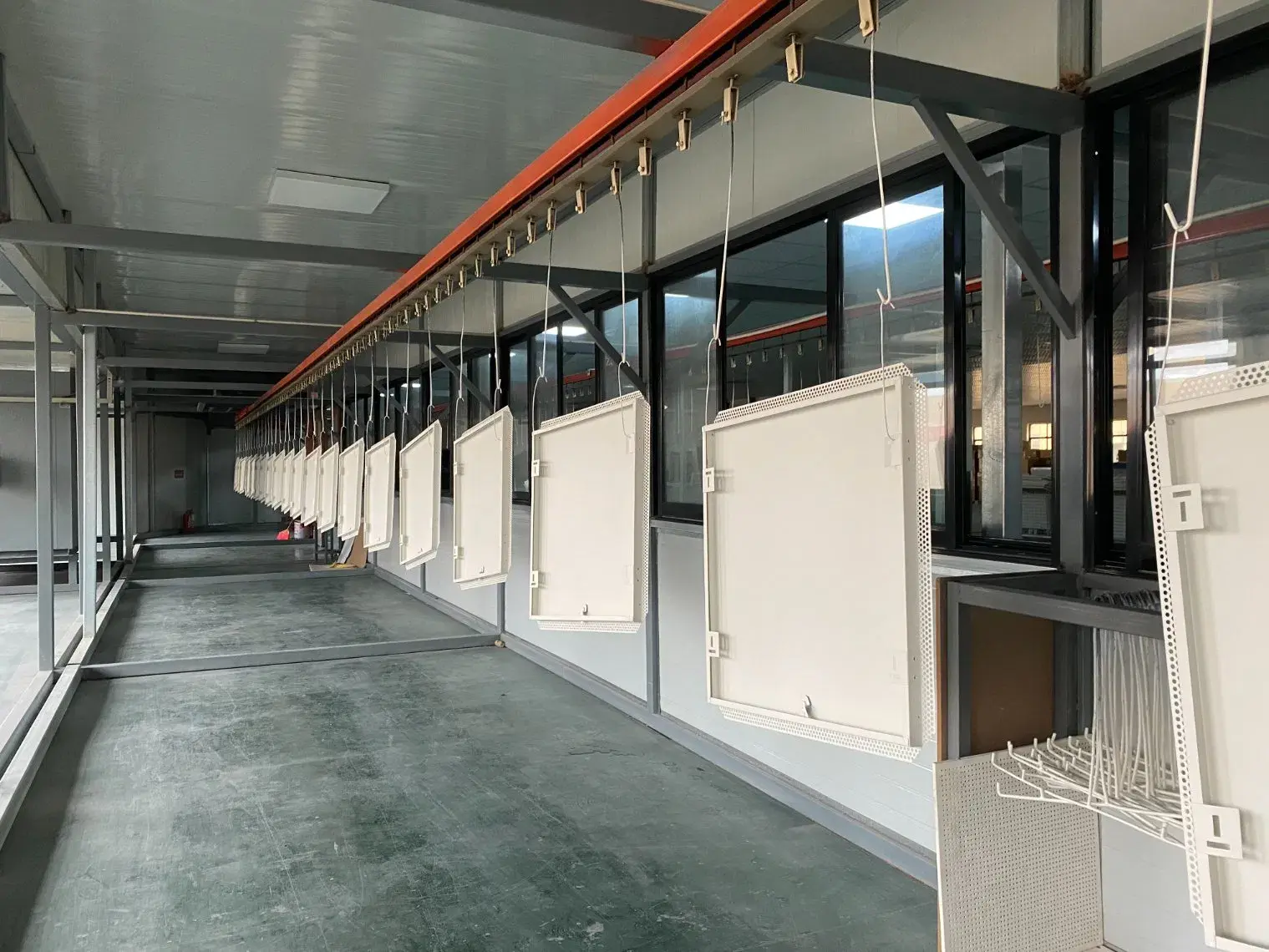What Key Features and Benefits Do Security Access Panels Provide for Commercial Facilities and Projects in 2025?
Commercial properties and construction sites require viable methods of concealing mechanical, electrical, and plumbing systems without compromising their easy accessibility in case they require maintenance. Security access panels do that; they offer a hidden entry point that allows anyone skilled enough to do it to work on the necessary utilities without needing to tear up the walls or destroy the finishes.
In 2025, these panels have become more than a metal door. The modern access panels are now able to help bring sustainability, smart-building integration, fire protection, and acoustical comfort, whilst maintaining a smooth, architectural appearance.
The new generation, whether it is drywall or fire-rated panels, with or without electronic smarts, will support data centers, hospitals, airports, manufacturing plants, and everything in between.
We’ll unpack the mechanics, the technology that has evolved in 2025, and how they have become an essential part of every professional undertaking.
What Is a Security Access Panel in Modern Commercial Design?
When you observe closely, in some hospital corridors or high-rise ceilings, you would discover that there are miniature doors fitted into walls or tiles. They are not aesthetic accents; those are security access panels, access gates that technicians use to access wiring, valves, or ductwork that is behind the finished surfaces.
The thing is that access panels were an afterthought. Today, they have included in the core infrastructure strategy of a building, providing combined fire safety, acoustic, and digital access control with the architecture.
In simple terms:
A Security access doors is a concealed, code-compliant opening designed to protect and provide access to MEP systems while maintaining the structure’s safety and appearance.
Modern designs fall into two broad categories:
- Physical Access Panels: Doors with manual access and are mechanical or fire-rated.
- Electronic or Smart Panels: It is connected to digital control systems to monitor remotely and to have biometric entry and access records.
Now both types are collaborating throughout the business industries, offices and hotels included, airports and labs alike, combining beauty with functionality.
Types of Access Panels Used in Commercial Facilities
Different environments demand different panels. Below is a list of the most popular ones.
1. Drywall Access Panels
These panels are the everyday heroes of interior design. They are concealed in the surface of gypsum boards or drywalls, and electrical or plumbing systems remain hidden without being visually disturbed. Contemporary designs have hidden hinges, frame-free edges, and a touch or magnetic lock to create smooth designs.
2. Fire-Rated Access Panels
The safety of the fire is not a compromise. These panels consist of insulated steel and intumescent, which expands when heated to prevent the spread of flames and smoke. The recent changes in the 2025 NFPA and UL standards established new two-hour fire ratings in new applications such as stairwells and mechanical shafts.
3. Acoustic and Sound-Rated Panels
Noise bleed cannot be afforded in hospitals, classrooms, and studios. Acoustic panels have gaskets that are made of rubber and insulation that is STC rated. The best models reach STC-45+, meaning they significantly block sound between rooms without compromising accessibility.
4. Tamper-Proof and Security-Grade Panels
Tamper-proof and security-grade access doors and panels are used in schools, prisons, and government buildings. They are made with thick steel and strong locks. This year, many have alarms or smart locks that warn staff when opened by force, improving both safety and control in secure areas.
5. Smart / Electronic Access Panels
The new horizon is smart panels. They are connected to Building Management Systems (BMS) so that they can be remotely controlled, be biometric or RFID-controlled, and tracked in access.
Others even apply AI analytics to forecast maintenance requirements by frequency of use – automating maintenance and preventing system crashes.
Examples: This is done in a data center where a smart panel access can alert when opened outside of working hours, record this act, and take security video of the surrounding area without any human intervention.
The Benefit of Access Panels in Enhancing Safety, Efficiency, and Design.
Security access panels quietly handle several critical roles in modern facilities:
- Access panels let workers reach hidden areas easily without breaking walls or ceilings.
- They keep wiring and pipes safe while allowing quick and simple inspections.
- Panels reduce repair time by giving quick access to hidden building areas.
- They improve safety by preventing unauthorized access to important system parts.
- Access panels blend with wall designs, keeping interiors neat and professional.
- They support better building management through organized and safe maintenance access points.
Simply
Access panels make buildings safer, easier to service, and visually cleaner — all while meeting code.
Trends Defining 2025 Access Panel Technology
The access panel market has moved from hardware to hybrid systems. Here’s what’s driving the change this year:
1. Smart Security Integration
AI-powered control systems now link directly with BMS platforms, allowing facilities to manage security access doors, control permissions, log entries and monitor openings in real time.
2. Eco-Friendly Materials
Manufacturers are resorting to recycled aluminum, coatings with low VOC, and powder-coated finishes that are LEED v5 and environmentally friendly.
3. Modular Construction Compatibility
With prefab construction booming, access panels now come in standardized modular units that fit pre-engineered wall sections — saving on customization time.
4. Advanced Corrosion Resistance
The 304 and 316 stainless steel models are being used to substitute painted metal used in the coastal and industrial regions and are proving more durable in the tough environments.
5. Frameless and Concealed Hardware Designs
The architects desire clean images. Access doors and panels now feature hidden hinges, magnetic latches and trimless frames to maintain continuous wall surfaces.
Quick Comparison to Understand Which Access Panel Fits Your Project
| Panel Type | Common Use | Material | Key Benefits | 2025 Highlight |
| Drywall | Ceilings/Walls | Aluminum or steel | Seamless design | Frameless Look |
| Fire-Rated | Shafts/Stairwells | Insulated steel | Fire protection | 2-hour UL rating |
| Acoustic | Studios, hospitals | Composite + gasket | Sound control | STC-45+ |
| Tamper-Proof | Schools, prisons | Heavy-gauge steel | High security | Alarm integration |
| Smart/Electronic | Offices, data centers | Digital systems | Remote tracking | AI-driven access |
Factors Engineers and Architects Must Check Before Specifying the Panels
Getting the right panel isn’t just about picking a size. It’s about meeting safety codes, performance, and practicality. Do consider these factors when trying to choose the best one for your project!
-
- Fire Rating: Match panel and wall ratings (1- or 2-hour) to maintain compliance.
- Acoustics and Insulation: Ensure the panel matches the wall STC and thermal performance.
- Load Capacity: Verify ceiling or floor panels can handle maintenance loads.
- Material Selection:
- Steel = strength and fire zones
- Aluminum = lightweight ceilings.
- Stainless = moisture or chemical exposure
- Mounting Orientation: Ceiling panels need recessed latches to avoid protrusions.
- Smart Integration: Coordinate with electrical teams for wiring and BMS protocols.
- Maintenance Clearance: Plan door swing and service space — an easy miss in tight rooms.
Explore smart access solutions with CAD Drafter today.
How Smart Access Panels Cut Costs & Strengthen Security
Smart panels have changed how commercial facilities manage access. Here’s what’s different now:
- Digital Credentials: RFID, PIN, or biometric access removes key management headaches.
Access Logs: Each open/close is logged and audited. - Predictive Maintenance: AI-based tools indicate high-traffic panels to be inspected early on, which eliminates unexpected downtime up to 25%.
- Efficiency in labor: Remote unlock saves time and money on the need to escort.
In industries like healthcare or data hosting, these systems are no longer optional — they’re essential to compliance and operational continuity.
Codes and Standards That Govern Access Panels in 2025
Compliance is the backbone of specification. Here are the key frameworks shaping panel design this year:
- NFPA 80 (2025): Fire-rated assemblies should be able to pass UL tests and be permanently labelled.
- ASTM E119 (2025): Structural fire endurance is defined.
- ADA Standards: Provides usability of reach and hardware.
- IBC 2024 (Referenced in 2025): Stipulates rules of placement, rating, and clearance.
- LEED v5: eco-material, recyclability, and low emissions finishes credits.
Why are Access Panels Increasing in Demand?
It is estimated that the global access panel market will increase to 1.6 billion by the year 2030, as compared to 1.1 billion in 2025. Key drivers:
- Stricter fire and security regulations.
- Quick adoption of smart buildings.
- Expansion in prefabricated and modular building.
North America has the biggest market share of more than 35%, with the fastest expanding market sections being the fire-rated and tamper-proof segments. Electronic models show 8%+ CAGR, thanks to data-center and healthcare expansion.
Where Access Panels Make a Difference
- Hospitals: Rooms are safe, private, and clean with fire-rated and tamper-proof panels.
- Airports: Smart panels help staff check and manage maintenance areas easily.
- Data Centers: Digital panels with locks stop anyone from entering without permission.
- Schools: Tamper-proof panels protect wires and systems from damage or misuse.
- Hotels: Flush panels fit well with walls and hide pipes neatly.
- Factories: Steel panels stay strong against rust, heat, and moisture in tough conditions.
Every setting has its own mix of code, convenience, and durability needs — and modern panels meet them all.
Partner with Cad Drafter for Precision Documentation!
If you’re a contractor or architect working with complex submittals, you understand that incomplete or incorrect drawings can delay approval timelines. That’s where Cad Drafter makes a difference.
Our specialists provide accurate, code-ready CAD layouts for all access panel types — from fire-rated assemblies to smart-panel electrical schematics. We handle compliance, dimensions, and coordination so your project clears review on the first pass.
Why Cad Drafter?
- Expertise in UL-, NFPA-, and IBC-compliant layouts
- Quick turnaround for contractors and design teams
- Transparent, editable CAD files that align with your specs
- Support for multi-panel schedules and smart-system integration
Ready to streamline your access panel documentation?
Partner with Cad Drafter — where precision meets practicality.
FAQs
What would be the ideal fire-rated panels for commercial buildings?
UL 2-hour panel products, including Babcock-Davis or Elmdor intumescent sealed panels, are 2025 NFPA 80 compliant.
Is it possible to have soundproof and fire-rated panels?
Yes. Mineral wool core hybrid panels with dual gaskets are available with both 90-minute fire resistance and STC-40+ acoustics.
Do smart panels offer greater security as compared to traditional ones?
When tied to managed credentials and audit logs, smart panels significantly reduce unauthorized access risks.
How often should access panels be inspected?
Fire-rated panels require annual NFPA 80 checks; general models benefit from quarterly inspections.
Do panels affect wall fire ratings?
Yes. Non-rated panels in rated walls void certification. Always match ratings.
Can electronic panels connect to BMS systems?
Most 2025 models support BACnet and Modbus protocols for centralized monitoring.
What are standard ceiling panel sizes?
12×12 -24×24 are the most common sizes, but custom sizes are commonplace.
Does the building code need access panels?
Yes. IBC Section 1209 mandates access to concealed utilities and dampers.
What can access panels offer to LEED certification?
Identify recycled metals, low-VOC finishes, and local manufacturing in LEED v5 credit.
Conclusion
Security access panels may look simple, but they’re carrying more responsibility than ever. In 2025, they focus not just on hiding infrastructure but also on safety, sustainability, digital control, and long-term efficiency.
They set the standard for how modern facilities ensure compliance, security, and readiness for the future—ranging from fire containment to smart security access doors integration. Whether you’re designing a hospital, school, or high-tech office, choosing the right panel — and documenting it correctly — is essential.





